Topical fluoride as a cause of dental fluorosis in children
- PMID: 38899538
- PMCID: PMC11187792
- DOI: 10.1002/14651858.CD007693.pub3
Topical fluoride as a cause of dental fluorosis in children
Abstract
Background: This is an update of a review first published in 2010. Use of topical fluoride has become more common over time. Excessive fluoride consumption from topical fluorides in young children could potentially lead to dental fluorosis in permanent teeth.
Objectives: To describe the relationship between the use of topical fluorides in young children and the risk of developing dental fluorosis in permanent teeth.
Search methods: We carried out electronic searches of the Cochrane Oral Health Trials Register, CENTRAL, MEDLINE, Embase, three other databases, and two trials registers. We searched the reference lists of relevant articles. The latest search date was 28 July 2022.
Selection criteria: We included randomized controlled trials (RCTs), quasi-RCTs, cohort studies, case-control studies, and cross-sectional surveys comparing fluoride toothpaste, mouth rinses, gels, foams, paint-on solutions, and varnishes to a different fluoride therapy, placebo, or no intervention. Upon the introduction of topical fluorides, the target population was children under six years of age.
Data collection and analysis: We used standard methodological procedures expected by Cochrane and used GRADE to assess the certainty of the evidence. The primary outcome measure was the percentage prevalence of fluorosis in the permanent teeth. Two authors extracted data from all included studies. In cases where both adjusted and unadjusted risk ratios or odds ratios were reported, we used the adjusted value in the meta-analysis.
Main results: We included 43 studies: three RCTs, four cohort studies, 10 case-control studies, and 26 cross-sectional surveys. We judged all three RCTs, one cohort study, one case-control study, and six cross-sectional studies to have some concerns for risk of bias. We judged all other observational studies to be at high risk of bias. We grouped the studies into five comparisons. Comparison 1. Age at which children started toothbrushing with fluoride toothpaste Two cohort studies (260 children) provided very uncertain evidence regarding the association between children starting to use fluoride toothpaste for brushing at or before 12 months versus after 12 months and the development of fluorosis (risk ratio (RR) 0.98, 95% confidence interval (CI) 0.81 to 1.18; very low-certainty evidence). Similarly, evidence from one cohort study (3939 children) and two cross-sectional studies (1484 children) provided very uncertain evidence regarding the association between children starting to use fluoride toothpaste for brushing before or after the age of 24 months (RR 0.83, 95% CI 0.61 to 1.13; very low-certainty evidence) or before or after four years (odds ratio (OR) 1.60, 95% CI 0.77 to 3.35; very low-certainty evidence), respectively. Comparison 2. Frequency of toothbrushing with fluoride toothpaste Two case-control studies (258 children) provided very uncertain evidence regarding the association between children brushing less than twice per day versus twice or more per day and the development of fluorosis (OR 1.63, 95% CI 0.81 to 3.28; very low-certainty evidence). Two cross-sectional surveys (1693 children) demonstrated that brushing less than once per day versus once or more per day may be associated with a decrease in the development of fluorosis in children (OR 0.62, 95% CI 0.53 to 0.74; low-certainty evidence). Comparison 3. Amount of fluoride toothpaste used for toothbrushing Two case-control studies (258 children) provided very uncertain evidence regarding the association between children using less than half a brush of toothpaste, versus half or more of the brush, and the development of fluorosis (OR 0.77, 95% CI 0.41 to 1.46; very low-certainty evidence). The evidence from cross-sectional surveys was also very uncertain (OR 0.92, 95% CI 0.66 to 1.28; 3 studies, 2037 children; very low-certainty evidence). Comparison 4. Fluoride concentration in toothpaste There was evidence from two RCTs (1968 children) that lower fluoride concentration in the toothpaste used by children under six years of age likely reduces the risk of developing fluorosis: 550 parts per million (ppm) fluoride versus 1000 ppm (RR 0.75, 95% CI 0.57 to 0.99; moderate-certainty evidence); 440 ppm fluoride versus 1450 ppm (RR 0.72, 95% CI 0.58 to 0.89; moderate-certainty evidence). The age at which the toothbrushing commenced was 24 months and 12 months, respectively. Two case-control studies (258 children) provided very uncertain evidence regarding the association between fluoride concentrations under 1000 ppm, versus concentrations of 1000 ppm or above, and the development of fluorosis (OR 0.89, 95% CI 0.52 to 1.52; very low-certainty evidence). Comparison 5. Age at which topical fluoride varnish was applied There was evidence from one RCT (123 children) that there may be little to no difference between a fluoride varnish application before four years, versus no application, and the development of fluorosis (RR 0.77, 95% CI 0.45 to 1.31; low-certainty evidence). There was low-certainty evidence from two cross-sectional surveys (982 children) that the application of topical fluoride varnish before four years of age may be associated with the development of fluorosis in children (OR 2.18, 95% CI 1.46 to 3.25).
Authors' conclusions: Most evidence identified mild fluorosis as a potential adverse outcome of using topical fluoride at an early age. There is low- to very low-certainty and inconclusive evidence on the risk of having fluorosis in permanent teeth for: when a child starts receiving topical fluoride varnish application; toothbrushing with fluoride toothpaste; the amount of toothpaste used by the child; and the frequency of toothbrushing. Moderate-certainty evidence from RCTs showed that children who brushed with 1000 ppm or more fluoride toothpaste from one to two years of age until five to six years of age probably had an increased chance of developing dental fluorosis in permanent teeth. It is unethical to propose new RCTs to assess the development of dental fluorosis. However, future RCTs focusing on dental caries prevention could record children's exposure to topical fluoride sources in early life and evaluate the dental fluorosis in their permanent teeth as a long-term outcome. In the absence of these studies and methods, further research in this area will come from observational studies. Attention needs to be given to the choice of study design, bearing in mind that prospective controlled studies will be less susceptible to bias than retrospective and uncontrolled studies.
Copyright © 2024 The Cochrane Collaboration. Published by John Wiley & Sons, Ltd.
Conflict of interest statement
There are no known potential conflicts of interest. May Chun Mei Wong, Anne‐Marie Glenny, and Helen Worthington are editors with Cochrane Oral Health but were not involved in the editorial processing of this update.
Figures
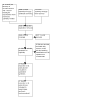
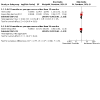

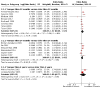

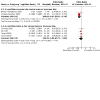
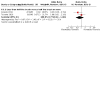
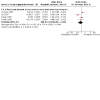
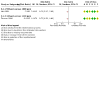
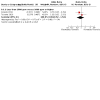
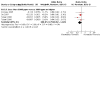

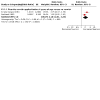
Update of
-
Topical fluoride as a cause of dental fluorosis in children.Cochrane Database Syst Rev. 2010 Jan 20;2010(1):CD007693. doi: 10.1002/14651858.CD007693.pub2. Cochrane Database Syst Rev. 2010. Update in: Cochrane Database Syst Rev. 2024 Jun 20;6:CD007693. doi: 10.1002/14651858.CD007693.pub3. PMID: 20091645 Free PMC article. Updated.
References
References to studies included in this review
Armas‐Vega 2019 {published data only}
Arrieta‐Vergara 2011 {published data only}
-
- Arrieta-Vergara KM, González-Martínez F, Luna-Ricardo L. Exploring the risk of dental fluorosis in children at the Universidad of Cartagena's odontology clinics. Revista de Salud Pública 2011;13(4):672-83.
Azevedo 2014 {published data only}
-
- Azevedo MS, Goettems ML, Torriani DD, Demarco FF. Factors associated with dental fluorosis in school children in southern Brazil: a cross-sectional study. Brazilian Oral Research 2014;28:1-7. - PubMed
Bal 2015 {published data only}
-
- Bal IS, Dennison PJ, Evans RW. Dental fluorosis in the blue Mountains and Hawkesbury, New South Wales, Australia: policy implications. Journal of Investigative and Clinical Dentistry 2015;6(1):45-52. - PubMed
Bårdsen 1998 {published data only}
-
- Bårdsen A, Bjorvatn K. Risk periods in the development of dental fluorosis. Clinical Oral Investigations 1998;2(4):155-160. - PubMed
Beltran‐Valladares 2005 {published data only}
-
- Beltran-Valladares PR, Cocom-Tun H, Casanova-Rosado JF, Vallejos-Sanchez AA, Medina-Solis CE, Maupome G. Prevalence of dental fluorosis and additional sources of exposure to fluoride as risk factors to dental fluorosis in schoolchildren of Campeche, Mexico. Revista de Investigacion Clinica 2005;57(4):532-539. - PubMed
Benazzi 2012 {published data only}
-
- Benazzi AS, da Silva RP, Meneghim M, Ambrosano GM, Pereira AC. Dental caries and fluorosis prevalence and their relationship with socioeconomic and behavioural variables among 12-year-old schoolchildren. Oral Health and Preventive Dentistry 2012;10(1):65-73. - PubMed
Bottenberg 2004 {published data only}
-
- Bottenberg P, Declerck D, Ghidey W, Bogaerts K, Vanobbergen J, Martens L. Prevalence and determinants of enamel fluorosis in Flemish schoolchildren. Caries Research 2004;38(1):20-28. - PubMed
Brothwell 1999 {published data only}
-
- Brothwell DJ, Limeback H. Fluorosis risk in grade 2 students residing in a rural area with widely varying natural fluoride. Community Dentistry & Oral Epidemiology 1999;27(2):130-136. - PubMed
Celeste 2016 {published data only}
-
- Celeste RK, Luz PB. Independent and additive effects of different sources of fluoride and dental fluorosis. Pediatric Dentistry 2016;38(3):233-238. - PubMed
Conway 2005 {published data only}
-
- Conway DI, MacPherson LM, Stephen KW, Gilmour WH, Petersson LG. Prevalence of dental fluorosis in children from non-water-fluoridated Halmstad, Sweden: fluoride toothpaste use in infancy. Acta Odontologica Scandinavica 2005;63(1):56-63. - PubMed
Do 2007 {published data only}
-
- Do LG, Levy SM, Spencer AJ. Association between infant formula feeding and dental fluorosis and caries in Australian children. Journal of Public Health Dentistry 2012;72(2):112-121. - PubMed
-
- Do LG, Spencer AJ. Decline in the prevalence of dental fluorosis among South Australian children. Community Dentistry & Oral Epidemiology 2007;35(4):282-291. - PubMed
-
- Do LG, Spencer AJ. Risk-benefit balance in the use of fluoride among young children. Journal of Dental Research 2007;86(8):723-728. - PubMed
-
- Spencer AJ, Do LG. Changing risk factors for fluorosis among South Australian children. Community Dentistry & Oral Epidemiology 2008;36(3):210-218. - PubMed
Dos Santos 2016 {published data only}
-
- Dos Santos APP, Malta MCB, de Marsillac MdWS, Oliveira BH. Fluoride varnish applications in preschoolers and dental fluorosis in permanent incisors: results of a nested-cohort study within a clinical trial. Pediatric Dentistry 2016;38(5):414-18. - PubMed
Holm 1982 {published data only}
-
- Holm AK, Andersson R. Enamel mineralization disturbances in12-year-old children with known earlyexposure to fluorides. Community Dentistry and Oral Epidemiology 1982;10(6):335-339. - PubMed
-
- Holm AK, Arvidsson S. Oral health in preschool Swedish children. 1. Three-year-old children. Odontologisk Revy 1974;25(1):81-98. - PubMed
Holt 1994 {published data only}
-
- Holt RD, Morris CE, Winter GB, Downer MC. Enamel opacities and dental caries in children who used a low fluoride toothpaste between 2 and 5 years of age. International Dental Journal 1994;44(4):331-341. - PubMed
Lalumandier 1995 {published data only}
-
- Lalumandier JA, Rozier R. The prevalence and risk factors of fluorosis among patients in a pediatric dental practice. Pediatric Dentistry 1995;17:19-25. - PubMed
Levy 2010 {published data only}
-
- Franzman MR, Levy SM, Warren JJ, Broffitt B. Fluoride dentifrice ingestion and fluorosis of the permanent incisors. Journal of the American Dental Association 2006;137(5):645-52. - PubMed
-
- Levy SM, Broffitt B, Marshall TA, Eichenberger-Gilmore JM, Warren JJ. Associations between fluorosis of permanent incisors and fluoride intake from infant formula, other dietary sources and dentifrice during early childhood. Journal of the American Dental Association 2010;141(10):1190-1201. - PMC - PubMed
Martinez‐Mier 2010 {published data only}
-
- Martinez‐Mier EA, Soto‐Rojas AE. Differences in exposure and biological markers of fluoride among White and African American children. Journal of Public Health Dentistry 2010;70(3):234-40. - PubMed
Mascarenhas 1998 {published data only}
-
- Mascarenhas AK, Burt BA. Fluorosis risk from early exposure to fluoride toothpaste. Community Dentistry & Oral Epidemiology 1998;26(4):241-248. - PubMed
-
- Mascarenhas AK. Fluoride Toothpaste: a Risk Factor in Dental Fluorosis. Michigan, USA: University of Michigan, 1995.
Maupome 2003 {published data only}
-
- Clark DC, Berkowitz J. The influence of various fluoride exposures on the prevalence of esthetic problems resulting from dental fluorosis. Journal of Public Health Dentistry 1997;57(3):144-149. - PubMed
-
- Maupome G, Shulman JD, Clark DC, Levy SM. Socio-demographic features and fluoride technologies contributing to higher fluorosis scores in permanent teeth of Canadian children. Caries Research 2003;37(5):327-334. - PubMed
Molina‐Frechero 2012 {published data only}
-
- Molina-Frechero N, Pierdant-Rodríguez AI, Oropeza-Oropeza A, Bologna-Molina R. Fluorosis and dental caries: an assessment of risk factors in Mexican children. Revista de Investigacion Clinica 2012;64(1):67-73. - PubMed
Morgan 1998 {published data only}
-
- Morgan L, Allred E, Tavares M, Bellinger D, Needleman H. Investigation of the possible associations between fluorosis, fluoride exposure, and childhood behavior problems. Pediatric Dentistry 1998;20(4):244-252. - PubMed
Nakornchai 2016 {published data only}
-
- Nakornchai S, Hopattaraput P, Vichayanrat T. Prevalence, severity and factors associated with dental fluorosis among children aged 8–10 years in Bangkok, Thailand. Southeast Asian Journal of Tropical Medicine and Public Health 2016;47(5):1105-11. - PubMed
Nunes‐Dos‐Santos 2017 {published data only}
-
- Moura LFAD, Lira DMMP, Moura MS, Barros SSLV, Lopes TSP, Leopoldino VD, Moura MDM. Oral health preventive program for pregnant women and infants. Jornal Brasileiro de Odontopediatria & Odontologia do Bebê 2001;4(17):10-14.
-
- Nunes-Dos-Santos DL, Almeida De Deus Moura LdF, De Deus Moura Lima M, Soares Pereira Lopes T, Silva De Moura M. Is severe early childhood caries predictive of caries and fluorosis in permanent teeth? Ten-year follow-up. Revista de Odontologia da UNESP 2017;46:164-73.
Opydo‐Szymaczek 2012 {published data only}
-
- Opydo-Szymaczek J, Gerreth K. Etiological factors related to dental fluorosis among children in Poznan, Poland–a preliminary report. Fluoride 2012;45(4):337-342.
Osuji 1988 {published data only}
-
- Osuji OO, Leake JL, Chipman ML, Nikiforuk G, Locker D, Levine N. Risk factors for dental fluorosis in a fluoridated community. Journal of Dental Research 1988;67(12):1488-1492. - PubMed
Pendrys 1989 {published data only}
-
- Pendrys DG, Katz RV. Risk of enamel fluorosis associated with fluoride supplementation, infant formula, and fluoride dentifrice use. American Journal of Epidemiology 1989;130(6):1199-1208. - PubMed
-
- Pendrys DG. An Analytical Epidemiologic Study of the Association Between Enamel Fluorosis and a History of Fluoride Supplementation, Infant Formula Ingestion, and Fluoride Dentifrice Use by Young Children. Ann Arbor, MI: University Microfilms International, 1988.
Pendrys 1996 {published data only}
-
- Pendrys DG, Katz RV, Morse DE. Risk factors for enamel fluorosis in a nonfluoridated population. American Journal of Epidemiology 1996;143(8):808-815. - PubMed
Pendrys 1998 {published data only}
-
- Pendrys DG, Katz RV. Risk factors for enamel fluorosis in optimally fluoridated children born after the US manufacturers' decision to reduce the fluoride concentration of infant formula. American Journal of Epidemiology 1998;148(10):967-974. - PubMed
Pendrys 2010 {published data only}
-
- Pendrys DG, Haugejorden O, Baårdsen A, Wang NJ, Gustavsen F. The risk of enamel fluorosis and caries among Norwegian children: implications for Norway and the United States. Journal of the American Dental Association 2010;141(4):401-14. - PubMed
Pereira 2000 {published data only}
-
- Pereira AC, Da Cunha FL, Meneghim MdeC, Werner CW. Dental caries and fluorosis prevalence study in a nonfluoridated Brazilian community: trend analysis and toothpaste association. ASDC Journal of Dentistry for Children 2000;67(2):132-135. - PubMed
Riordan 1991 {published data only}
-
- Riordan PJ, Banks J. Dental fluorosis and fluoride exposure in Western Australia. Journal of Dental Research 1991;70(7):1022-8. - PubMed
Riordan 2002 {published data only}
-
- Riordan PJ. Dental fluorosis decline after changes to supplement and toothpaste regimens. Community Dentistry & Oral Epidemiology 2002;30(3):233-240. - PubMed
Rock 1997 {published data only}
-
- Rock WP, Sabieha AM. The relationship between reported toothpaste usage in infancy and fluorosis of permanent incisors. British Dental Journal 1997;183(5):165-170. - PubMed
Sagheri 2007 {published data only}
-
- Sagheri D, McLoughlin J, Clarkson JJ. The prevalence of dental fluorosis in relation to water or salt fluoridation and reported use of fluoride toothpaste in school-age children. European Archives of Paediatric Dentistry 2007;8(1):62-68. - PubMed
Saldarriaga 2021 {published data only}
Skotowski 1995 {published data only}
-
- Skotowski MC, Hunt RJ, Levy SM. Risk factors for dental fluorosis in pediatric dental patients. Journal of Public Health Dentistry 1995;55(3):154-159. - PubMed
Szpunar 1988 {published data only}
-
- Szpunar SM, Burt BA. Dental caries, fluorosis, and fluoride exposure in Michigan schoolchildren. Journal of Dental Research 1988;67(5):802-806. - PubMed
Tabari 2000 {published data only}
-
- Tabari ED, Ellwood R, Rugg-Gunn AJ, Evans DJ, Davies RM. Dental fluorosis in permanent incisor teeth in relation to water fluoridation, social deprivation and toothpaste use in infancy. British Dental Journal 2000;189(4):216-220. - PubMed
Tavener 2006 {published data only}
-
- Tavener A, Davies GM, Davies RM, Ellwood RP. The prevalence and severity of fluorosis in children who received toothpaste containing either 440 or 1,450 ppm F from the age of 12 months in deprived and less deprived communities. Caries Research 2006;40(1):66-72. - PubMed
-
- Tavener JA, Davies GM, Davies RM, Ellwood RP. The prevalence and severity of fluorosis and other developmental defects of enamel in children who received free fluoride toothpaste containing either 440 or 1450 ppm F from the age of 12 months. Community Dental Health 2004;21(3):217-223. - PubMed
Teixeira 2010 {published data only}
-
- Teixeira A, Bezerra de Menezes LM, Dias AA, Morais de Alencar CH, Leitao de Almeida ME. Analysis of protection or risk factors for dental fluorosis in 6 to 8 year-old children in Fortaleza, Brazil. Revista Panamericana de Salud Publica - Pan American Journal of Public Health 2010;28(6):421-8. - PubMed
Vallejos‐Sánchez 2006 {published data only}
-
- Vallejos-Sánchez AA, Eduardo Medina-Solís C, Fernando Casanova-Rosado J, Maupomé G, Minaya-Sánchez M, Pérez-Olivares S. Dental fluorosis in cohorts born before, during, and after the national salt fluoridation program in a community in Mexico. Acta Odontologica Scandinavica 2006;64(4):209-13. - PubMed
Wang 1997 {published data only}
-
- Wang NJ, Gropen AM, Ogaard B. Risk factors associated with fluorosis in a non-fluoridated population in Norway. Community Dentistry & Oral Epidemiology 1997;25(6):396-401. - PubMed
References to studies excluded from this review
Bhagavatula 2016 {published data only}
Cabralez 2019 {published data only}
-
- Cabralez EE, Flórez ML, Montoya Vega ME. Factors associated with dental fluorosis in children and teenagers from the city of Montería, Colombia. Revista Facultad de Odontología Universidad de Antioquia 2019;31(1):26-35.
De Moura 2013 {published data only}
-
- De Moura MS, Carvalho MM, Silva MCC, de Lima MdDM, de Deus Moura LdFA, Melo Simplício AH. The impact of a dental program for maternal and infant health on the prevalence of dental fluorosis. Pediatric Dentistry 2013;35(7):519-22. - PubMed
Kumar 1999 {published data only}
-
- Kumar JV, Swango PA. Fluoride exposure and dental fluorosis in Newburgh and Kingston, New York: policy implications. Community Dentistry and Oral Epidemiology 1999;27(3):171-80. - PubMed
Narvai 2011 {published data only}
-
- Narvai PC, Soares M, Frias A, Marques R, Cruz D, Frazão P. Dental fluorosis in children of SÃo paulo, Brazil, in 1998–2008. Journal of Epidemiology and Community Health 2011;65(Suppl 1):P1-260. [DOI: 10.1136/jech.2011.142976e.52] - DOI
Pendrys 1994 {published data only}
-
- Pendrys DG, Katz RV, Morse DE. Risk factors for enamel fluorosis in a fluoridated population. American Journal of Epidemiology 1994;140(5):461-71. - PubMed
Rigo 2010 {published data only}
-
- Rigo L, Caldas Junior AdF, Souza EHAd. Factors associated with dental fluorosis. Revista Odonto Ciência 2010;25:8-14.
Riordan 1993 {published data only}
-
- Riordan PJ. Dental fluorosis, dental caries and fluoride exposure among 7‐year‐olds. Caries Research 1993;27(1):71‐7. - PubMed
Rong 2008 {published data only}
-
- Rong WS, Wang WJ, Bian JY. Can early toothbrushing with fluoridate toothpaste lead to dental fluorosis? Journal of Dental Research 2008;87(Spec Iss B):2995.
Tiwari 2010 {published data only}
-
- Tiwari P, Kaur S, Sodhi A. Dental fluorosis and its association with the use of fluoridated toothpaste among middle school students of Delhi. Indian Journal of Medical Sciences 2010;64(1):1. - PubMed
References to studies awaiting assessment
Ak M 1995 {published data only}
-
- Ak M. Fluoride toothpaste: a risk factor in dental fluorosis. [Thesis] 1995.
Dg 1988 {published data only}
-
- Dg P. An analytical epidemiologic study of the association between enamel fluorosis and history of fluoride supplementation, infant formula ingestion, and fluoride dentifrice use by young children. [Thesis] 1988.
Larsen 1987 {published data only}
-
- Larsen MJ, Kirkegaard E, Poulsen S, Fejerskov O. Dental fluorosis in Denmark. II. Large single doses of fluoride and dental fluorosis. Tandlaegebladet 1987;91(18):761-4. - PubMed
Additional references
Abanto Alvarez 2009
-
- Abanto Alvarez J, Rezende KM, Marocho SM, Alves FB, Celiberti P, Ciamponi AL. Dental fluorosis: exposure, prevention and management. Medicina Oral, Patología Oral y Cirugía Bucal 2009;14(2):E103-107. - PubMed
Barnhart 1974
-
- Barnhart WE, Hiller LK, Leonard GJ, Michaels SE. Dentifrice usage and ingestion among four age groups. Journal of Dental Research 1974;53(6):1317-22. - PubMed
Bhagavatula 2015
Buzalaf 2011
-
- Buzalaf MA, Levy SM. Fluoride intake of children: considerations for dental caries and dental fluorosis. Fluoride and the Oral Environment 2011;22:1-19. - PubMed
Buzalaf 2013
-
- Buzalaf MA, Cardoso CdAB, Magalhães AC. Low-fluoride toothpastes may not lead to dental fluorosis but may not control caries development; standard fluoride toothpastes can control caries development but may lead to dental fluorosis. Journal of Evidence Based Dental Practice 2013;13(4):148-50. - PubMed
Chankanka 2010
-
- Chankanka O, Levy SM, Warren JJ, Chalmers JM. A literature review of aesthetic perceptions of dental fluorosis and relationships with psychosocial aspects/oral health-related quality of life. Community Dentistry and Oral Epidemiology 2010;38(2):97-109. - PubMed
Chen 2006
Chou 2013
-
- Chou R, Cantor A, Zakher B, Mitchell JP, Pappas M. Preventing dental caries in children. Pediatrics 2013;132(2):332-50. - PubMed
Chu 2008
-
- Chu C, Lo E. Uses of sodium fluoride varnish in dental practice. Annals of the Royal Australasian College of Dental Surgeons 2008;19:58-61. - PubMed
Clark 1993
DenBesten 2011
Do 2012
-
- Do LG, Levy SM, Spencer AJ. Association between infant formula feeding and dental fluorosis and caries in Australian children. Journal of Public Health Dentistry 2012;72(2):112-21. - PubMed
Ekambaram 2011
-
- Ekambaram M, Itthagarun A, King NM. Ingestion of fluoride from dentifrices by young children and fluorosis of the teeth - a literature review. Journal of Clinical Pediatric Dentistry 2011;36(2):111-22. - PubMed
Ekstrand 1987
-
- Ekstrand J. Pharmacokinetic aspects of topical fluorides. Journal of Dental Research 1987;66(5):1061-5. - PubMed
Ekstrand 1996
-
- Ekstrand J. Fluoride metabolism. In: Fejerskov O, Ekstrand J, Burt BA, editors(s). Fluoride in Dentistry. 2nd edition. Copenhagen: Munksgaard, 1996:50-68.
Ellwood 2009
-
- Ellwood R, Cury J. How much toothpaste should a child under the age of 6 years use? European Archives of Paediatric Dentistry 2009;10(3):168-74. - PubMed
Franzman 2006
-
- Franzman MR, Levy SM, Warren JJ, BroHitt B. Fluoride dentifrice ingestion and fluorosis of the permanent incisors. Journal of the American Dental Association 2006;137(5):645-52. - PubMed
Funmilayo 2014
-
- M Funmilayo A-SI, Mojirade AD. Dental fluorosis and its indices, what’s new? IOSR Journal of Dental and Medical Sciences 2014;13(7):55-60.
Higgins 2022a
-
- Higgins JP, Savović J, Page MJ, Elbers RG, Sterne JA. Chapter 8: Assessing risk of bias in a randomized trial. In: Higgins JP, Thomas J, Chandler J, Cumpston M, Li T, Page MJ, Welch VA (editors). Cochrane Handbook for Systematic Reviews of Interventions version 6.3 (updated February 2022). Cochrane, 2022. Available from www.training.cochrane.org/handbook.
Higgins 2022b
-
- Higgins JP, Eldridge S, Li T (editors). Chapter 23: Including variants on randomized trials. In: Higgins JP, Thomas J, Chandler J, Cumpston M, Li T, Page MJ, Welch VA (editors). Cochrane Handbook for Systematic Reviews of Interventions version 6.3 (updated February 2022). Cochrane, 2022. Available from www.training.cochrane.org/handbook.
Higgins 2023
-
- Higgins JP, Li T, Deeks JJ (editors). Chapter 6: Choosing effect measures and computing estimates of effect. In: Higgins JP, Thomas J, Chandler J, Cumpston M, Li T, Page MJ, Welch VA (editors). Cochrane Handbook for Systematic Reviews of Interventions version 6.4 (updated August 2023). Cochrane, 2023. Available from www.training.cochrane.org/handbook.
Kargul 2003
-
- Kargul B, Caglar E, Tanboga I. History of water fluoridation. Journal of Clinical Pediatric Dentistry 2003;27(3):213-7. - PubMed
Kubota 2005
-
- Kubota K, Lee DH, Tsuchiya M, Young CS, Everett ET, Martinez-Mier EA, et al. Fluoride induces endoplasmic reticulum stress in ameloblasts responsible for dental enamel formation. Journal of Biological Chemistry 2005;280(24):23194-202. - PubMed
Lecompte 1987
-
- Lecompte EJ. Clinical application of topical fluoride products: risks, benefits and recommendations. Journal of Dental Research 1987;66(5):1066-71. - PubMed
Levy 1994
-
- Levy SM. Review of fluoride exposures and ingestion. Community Dentistry & Oral Epidemiology 1994;22(3):173-80. - PubMed
Limeback 1994
-
- Limeback H. Enamel formation and the effects of fluoride. Community Dentistry and Oral Epidemiology 1994;22(3):144-7. - PubMed
Loke 2007
Marinho 2003
Marinho 2004a
-
- Marinho VC, Higgins JP, Sheiham A, Logan S. One topical fluoride (toothpastes, or mouthrinses, or gels, or varnishes) versus another for preventing dental caries in children and adolescents. Cochrane Database of Systematic Reviews 2004, Issue 1. Art. No: CD002780. [DOI: 10.1002/14651858.CD002780.pub2] - DOI - PMC - PubMed
Marinho 2004b
-
- Marinho VC, Higgins JP, Sheiham A, Logan S. Combinations of topical fluoride (toothpastes, mouthrinses, gels, varnishes) versus single topical fluoride for preventing dental caries in children and adolescents. Cochrane Database of Systematic Reviews 2004, Issue 1. Art. No: CD002781. [DOI: 10.1002/14651858.CD002781.pub2] - DOI - PMC - PubMed
Marinho 2013
Marinho 2015
Marinho 2016
Ogaard 1994
-
- Ogaard B, Seppä L, Rolla G. Professional topical fluoride applications — clinical efficacy and mechanism of action. Advances in Dental Research 1994;8(2):190-201. - PubMed
Oulis 2000
-
- Oulis C, Raadal M, Martens L. Guidelines on the use of fluoride in children: an EAPD policy document. European Journal of Paediatric Dentistry 2000;1(1):7-12. - PubMed
Pendrys 1990
-
- Pendrys DG, Stamm JW. Relationship of total fluoride intake to beneficial effects and enamel fluorosis. Journal of Dental Research 1990;69 Spec No:529-38. - PubMed
Pendrys 2000
-
- Pendrys DG. Risk of enamel fluorosis in nonfluoridated and optimally fluoridated populations: considerations for the dental professional. Journal of the American Dental Association 2000;131(6):746-55. - PubMed
RevMan 2024 [Computer program]
-
- Review Manager (RevMan). Version 7.11.0. The Cochrane Collaboration, 2024. Available at revman.cochrane.org.
Rozier 1994
-
- Rozier RG. Epidemiologic indices for measuring the clinical manifestations of dental fluorosis: overview and critique. Advances in Dental Research 1994;8(1):39-55. - PubMed
Santos 2013
-
- Santos A, Oliveira B, Nadanovsky P. Effects of low and standard fluoride toothpastes on caries and fluorosis: systematic review and meta-analysis. Caries Research 2013;47(5):382-90. - PubMed
Schünemann 2013
-
- Schünemann H, Brożek J, Guyatt G, Oxman A (editors). Handbook for grading the quality of evidence and the strength of recommendations using the GRADE approach (updated October 2013). GRADE Working Group, 2013. Available from gdt.guidelinedevelopment.org/app/handbook/handbook.html.
Shayam 2020
Stookey 1994
-
- Stookey GK. Review of fluorosis risk of self-applied topical fluorides: dentifrices, mouthrinses and gels. Community Dentistry & Oral Epidemiology 1994;22(3):181-6. - PubMed
Walsh 2019
Whelton 2019
-
- Whelton HP, Spencer AJ, Do LG, Rugg-Gunn AJ. Fluoride revolution and dental caries: evolution of policies for global use. Journal of Dental Research 2019;98(8):837-46. - PubMed
Wong 2011
-
- Wong MC, Clarkson J, Glenny AM, Lo EC, Marinho VC, Tsang BW, et al. Cochrane reviews on the benefits/risks of fluoride toothpastes. Cochrane Database of Systematic Reviews 2011;90(5):573-9. - PubMed
Wright 2014
-
- Wright JT, Hanson N, Ristic H, Whall CW, Estrich CG, Zentz RR. Fluoride toothpaste efficacy and safety in children younger than 6 years: a systematic review. Journal of the American Dental Association 2014;145(2):182-9. - PubMed
Zhang 1988
-
- Zhang J, Yu KF. What's the relative risk? A method of correcting the odds ratio in cohort studies of common outcomes. JAMA 1998;280(19):1690-1. - PubMed
ROBINS‐E Development Group 2022
-
- Higgins J, Morgan R, Rooney A, Taylor K, Thayer K, Silva R, et al. Risk Of Bias In Nonrandomized Studies - of Exposure (ROBINS-E). Launch version. Available from: www.riskofbias.info/welcome/robins-e-tool (accessed prior to June 2022).
References to other published versions of this review
Publication types
MeSH terms
Substances
LinkOut - more resources
Full Text Sources

